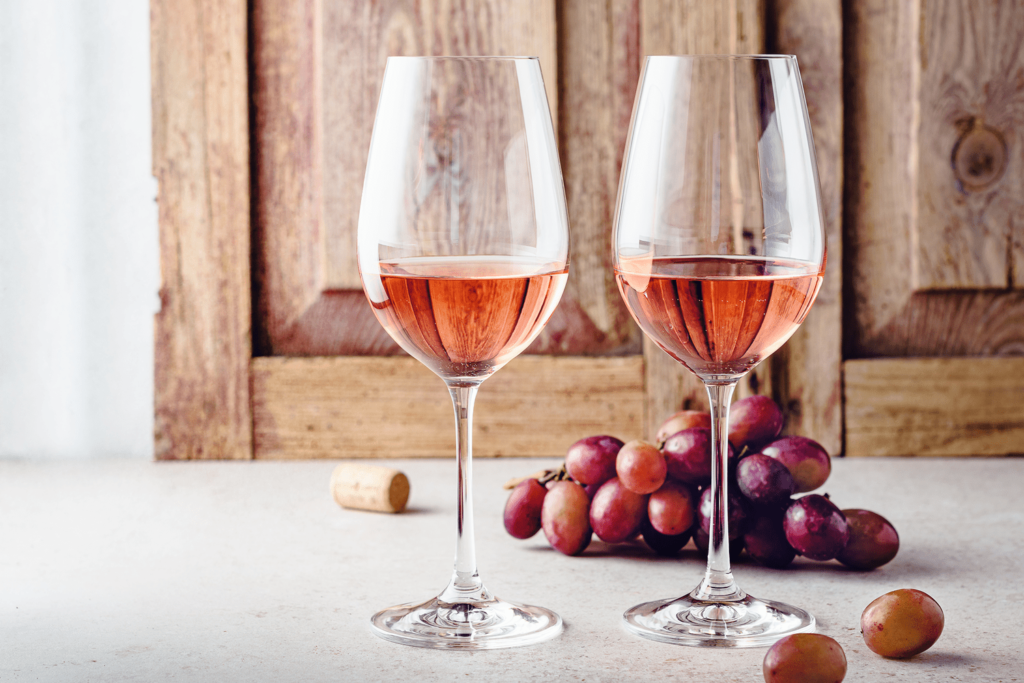
Read up on rosé wine
We don’t need to tell you how recently famous rosé wine has become. This pink beverage of choice, essentially nonexistent on restaurant menus and wine alcohol delivery Ontario shelves a decade ago, now seems everywhere you look or hear about it; due to a trend that some credit to celebrities and social media, rosé is undoubtedly the wine of the moment.
Whether you regularly consume rosé or have never done so, understanding the wine’s past significantly makes it enjoyable and intriguing. At J&J Alcohol Delivery, we enjoy discussing our love of wine, and today we’d like to discuss rosé wine alcohol delivery in Ontario. After reading our blog, visit our online store to check our extensive selection of rosé and other wines or beverages.
What Sets Rosé Apart From Other Types of Wine?
When people ask what kind of wine is in a particular bottle, the response typically relates to the grape used to make the wine or the region where it was made. Grape varieties include Cabernet Sauvignon, Pinot Noir, and Riesling. You hear the names of the wine-making Ontario alcohol delivery areas when you hear Bordeaux, Burgundy, or Champagne.
Remember that wines with regional branding may contain a range of grape varietals, but regulations govern which ones are allowed and which are not. For instance, just six unique grapes may create a red Bordeaux.
A common query is, “What grapes are used to prepare rosé wine?”. Rosé wines do not adhere to the exact requirements as Ontario delivery alcohol other wines; it is a fact. The word “rosé” only refers to the wine’s hue. Contrary to popular belief, the wine’s pink colour does not result from using a pink grape hybrid.
Although there are other ways to make rosé wine, the skins of a red grape variety give the finished product its colour.
One of the most common ways to make rosé involves crushing red grapes and leaving their skins in alcohol Ontario delivery contact with the juice. The wine will darken as the liquid is in connection with the red wine grape skins for a more extended period. It just takes a few hours to obtain the distinctive, beautiful pink tint, after which the skins are filtered out of the liquid.
Where Is Rosé Produced?
Since grapes can make rosé wine, their production is not limited to a particular area. Excellent rosés are produced in several locations, including California, Italy, Spain, and Australia. However, the best rosés originate in southern France and are most frequently consumed. French rosé is often drier and lighter in colour than many of its worldwide rivals.
What Does Rosé Taste Like?
One of the reasons rosé has become so popular is because of its light, agreeable flavour. There will be a lot of variation between brands of rosé because it can be made from any grape. Like any wine, rosés come in various hues, flavours, and intensities, but many will have overtones of brightness, fruit, and zing. Frequent tastes include strawberry, grapefruit, rose petal, raspberry, melon, and even celery.
What Meals Pair Well With Rosé?

Rosé’s vibrant, fruity taste is believed to go nicely with virtually everything. As a result, many people bring it to dinner parties and picnics, especially when they are unsure of the menu or know there will be a variety of cuisines present.
The fruit tastes in rosé go well with meats and spicy food. Due to the tangy, lemony undertones, it pairs well with fish and salads. Rosé is a safe choice if you’re not sure what to order because it doesn’t go well with some dishes.
How ought it to be presented?
We regularly advise you to enjoy your wine as you like. While some prefer chilled wine, others like it more at room temperature. The majority of the time, rosé is served cold.
This does not imply that you should remove it from the refrigerator and immediately begin drinking it. On the contrary, wine at 50 to 60 degrees Fahrenheit is recommended, even for best-served cold wines.
Why Do So Many People Find It Appealing?
The popularity of rosé wine during the past ten years is easy to understand. However, for customers looking for something simple to drink that pairs well with whatever is on their plate, it isn’t easy to find a more versatile wine than rosé.
Because it is widely accessible and relatively simple to produce, it is typically less expensive than other wines. Additionally, rosé is a great entry point into what might become your new favourite hobby for those who find the world of wine perplexing and even intimidating.

